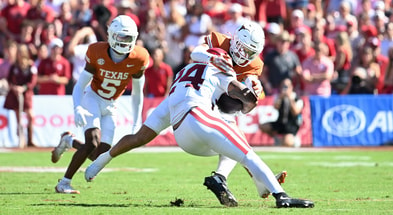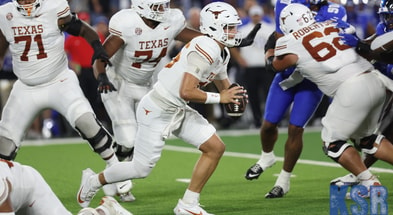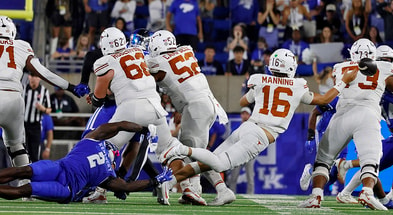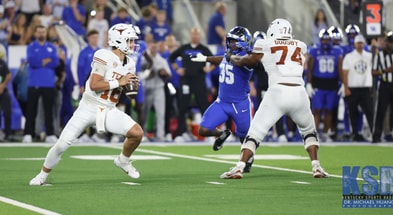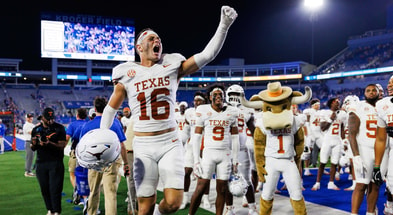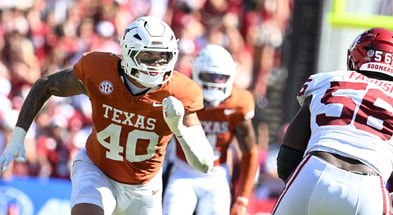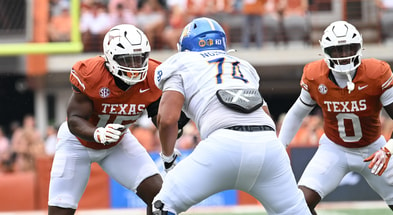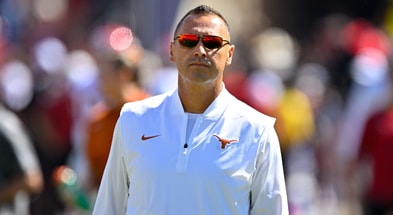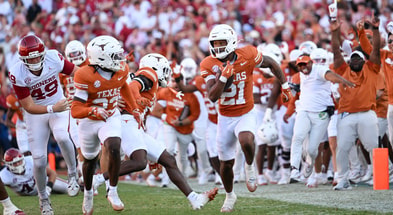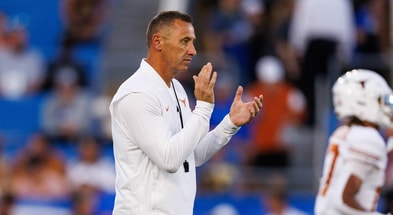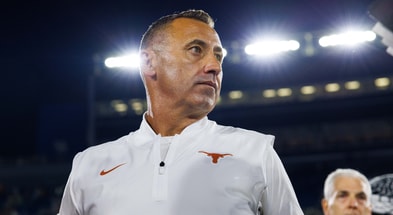What we gain, lose from moving to a 12-team College Football Playoff

Before the College Football Playoff expands to 12 teams beginning with the 2024 season, there will be one final four-team CFP featuring the Michigan Wolverines, the Washington Huskies, the Texas Longhorns, and the Alabama Crimson Tide.
[Join Inside Texas today using our College Football Playoff sale and choose from two great offers!]
The expansion comes a year too late if you’re Florida State or nine years too late if you’re Baylor. Those teams were snubbed from a spot in the field of four despite winning or sharing a conference title. The Seminoles even went undefeated and had two one-loss teams controversially placed ahead of them, though the more criticized selection of the two was Alabama at No. 4.
That won’t be an issue next season when conference champions receive an automatic bid, with the four highest-seeded teams earning first-round byes (and what happens to the Pac-2 of Oregon State and Washington State remains to be seen as it pertains to the six automatic bids).
Change has been a constant in college football over the past five, 10, 15, and even 30 years when it comes to picking the best team in the land. Before teams competed for a title, there wasn’t even a dedicated championship game. National titles could be split and it was rarely without controversy. Even with a championship game, there was a split title in 2003.
The BCS had controversy. The CFP has controversy. The 12-team playoff will have controversy. But what is the sport really gaining (or losing) by tripling the size of the field?
What we gain…
Better representation: The Florida State situation simply won’t occur with a 12-team playoff. Now, the Noles would have missed out on a first-round bye, but they wouldn’t have lost the opportunity to contend for a national title. Plus, the Group of 5 in whatever form it takes after realignment settles will have ample opportunity to make the field. This year, that nod would have gone to Liberty, who had the highest ranking among G5 teams in the final CFP top 25. As opposed to the narrowest of paths existing for any deserving G5 team, one only Cincinnati has been able to traverse, there is a realistic one for the best team from those ranks at least as far as making the field.
If this year was any illustration, the super-conference era is likely to create situations where a handful of teams end up with one or fewer losses. This year, six Power Five teams fit that bill and only four could make it. In the coming years, any of those teams who went through the season unblemished or nearly so will have an opportunity at the title.
The games and their locations: Looking at this year’s potential 12-team bracket, think about how this sounds. Missouri at Oregon for the right to face Michigan? Ole Miss at Georgia for the chance to play Texas in the quarterfinals? Penn State at Ohio State in a rematch for the opportunity to play Washington? Liberty at Florida State with a game against Alabama awaiting the victor?
While there are a few rematches and the probability of a blowout in a hypothetical game between the Seminoles and the Flames, think of the possibilities in the coming years considering who’s contending in college football at the current moment. LSU could host a playoff game at night in Tiger Stadium. Teams could have to travel to Ohio Stadium for an evening in December for the right to advance. National college football cathedrals will host some of the most pivotal games the sport has ever seen. And the types of teams that play in those cathedrals are the ones millions will tune in to see.
These matchups will be everything a college football fan could want. The top teams. The historic venues. Those will undoubtedly be wins for college football.
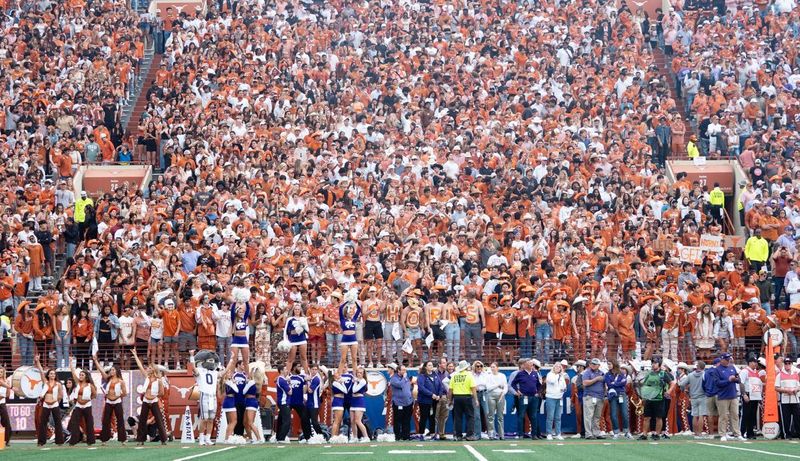
More football at a good time for players: Everyone likes more football, right? It’s why bowl season, even with some arguably “boring” games featuring MAC schools taking on 5-7 Big 10 programs, still draw a lot of interest. People are home for the holidays, there’s time off of work, and something’s got to be on TV. Why not football?
More football means more hits, more collisions, more impact, and more opportunities for injuries. But now this is the NIL era, where college players can be paid. Though it’s not necessarily for play, it’s money delivered to a football player because of his stature thanks to the sport.
It’s a fairer deal than one that asked players to add more games to their schedule without the possibility of additional reward. As On3 can tell you, the platform these games provide give players a chance to boost their value. If the players are going to take more hits, it’s a good thing they can make something as a result.
No quibbling: This year was a doomsday scenario for the selection committee, with five deserving conference champions vying for four spots. Whoever was picked No. 5 was going to be left upset to put it mildly, and there may be fans out there who always wonder what would have happened if No. 5 was instead No. 4.
In the future, that argument will not hold as much weight. There’s a big difference between arguing No. 4 and No. 5 and arguing No. 12 and No. 13. After all, the No. 4 team has won the national title twice. If the No. 5 team is not that far behind the No. 4 team, there’s a chance they could have win it all too.
A snub at No. 13? That’s a tough argument to believe. Plus, whoever wins will have to either win three games or four games depending on the route. The cream will rise to the top with the 12-team field and leave little doubt as to who the No. 1 team is.
What we lose…
Perfection: Here are the regular season loss totals of the last five Super Bowl champions: three, five, five, four, five.
Top 10
- 1New
Michael Taaffee
Texas DB has surgery
- 2Hot
SEC fines Texas A&M
Faking injuries is costly
- 3
Tony Vitello
Vols coach spotted at scrimmage
- 4
UF Coaching Search
Two non-Kiffin names to watch
- 5Trending
Steve Spurrier
Reacts to Kiffin, Florida talk
Get the Daily On3 Newsletter in your inbox every morning
By clicking "Subscribe to Newsletter", I agree to On3's Privacy Notice, Terms, and use of my personal information described therein.
Here are the regular season loss totals of the last five CFP champions: zero, one, zero, zero, zero.
There’s a unique emphasis on perfection in college football, one that was accentuated by the elimination of the tie in the mid 1990s. The games — each game — is something incredibly valuable. It’s why rivalries matter that much more, especially at the highest levels. One slip up could cost a strong, successful program the chance to win it all and to the benefit of their rival.
And even looking further back, there have been only two two-loss champions conferred titles by major selectors: Minnesota in 1960 and LSU in 2007.
A team making it into the top 11 or 12 with four losses isn’t within the realm of possibility. If there was a 12-team playoff this year, two-loss teams like Oregon, Missouri, Penn State, and Ole Miss would have made the field.
However, a number of three-loss teams have finished within the top 11 or 12 since the inception of the CFP. Though many of them are conference champions, some 9-3 teams have snuck their way into the top 10.
The incredible value that comes from winning and the sheer agony that comes from losing would be diminished. There would be no going back.
Care?: At this juncture there are six clear bowl games that matter more than the others, with two mattering more than those. The New Years Six is made up of the Cotton, Rose, Orange, Sugar, Peach, and Fiesta Bowls, with two of those serving as the CFP semifinals each year.
The other four are important, some of them historic competitions that go back nearly a century. But even in the last few years, there have been players who have opted out of New Years Six games. Texas was the beneficiary in 2019 when Deandre Baker, the 2018 Thorpe Award winner for the Georgia Bulldogs, sat out the Sugar Bowl.

The chance a player decides to sit out a game in the 12-team playoff is incredibly small. But it’s not zero. It’s best to prepare for that sort of shock now than to be surprised by it when it happens.
There’s also a chance that a team comfortable in its ability to make the playoff will treat portions of the regular season like an NFL team that’s clinched a spot in the playoffs treats Week 18. That will be the clearest sign that what was once the most important regular season in sports has lost its grip on that title. Teams could risk playing the backups to protect starters, even if it could mean playing an extra game down the road and costing a chance at a conference title.
Back in October, Eric Nahlin wrote that the second half of the season was to become one big tournament.
When teams can rest players or players elect to sit those games out entirely, the sport will not be able to say that.
[Subscribe to the brand new Inside Texas YouTube channel!]
The start of a real tournament will soften that blow, but it’ll be a sad day for those who valued games in October and November for more than just a one in the W column.
